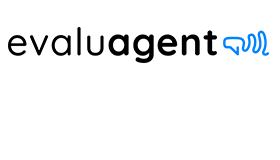Jodie Rhodes at EvaluAgent outlines some handy approaches to reducing operating costs in call centres.
Statistics show that acquiring new customers is five times more costly than retaining existing customers. Ensuring you provide a better quality service than your competitors is a key way to retain customers, and call centres can provide that extra level of service.
But running a call centre can come at a large cost to businesses. Not only are there the calling fees, software and office space to consider, you’ve also got to hire and train agents to deliver the best quality service.
Reducing overall costs in call centres is easily possible, but it’s important you do so with as little negative impact on customer experience as possible.
Not sure where to begin? Here’s 5 handy approaches to reducing operating costs in call centres.
Utilise Technology
Implementing the appropriate technology will improve team efficiency and allow agents to deliver a higher level of customer service.
And there’s certainly work to be done. Research has suggested that up to 60% of agents believe that their company doesn’t always provide the technology they need to address challenges.
Some of the key call centre technologies to consider implementing include:
- Interactive voice response (IVR)
- Automatic Call Distribution (ACD)
- Quality Assurance analysis
Each of these technologies can help to reduce handling time and subsequent costs. IVR will guide your caller through a self-service menu. Automated prompts can help the callers to solve their own issues, or direct them to an agent if needed.
ACD routes in-bound calls to the agent best equipped to handle the inquiry. This increases the likelihood of a first call resolution and ensures the customer isn’t having to repeat information to more than one agent.
Streamline Processes
Streamlining your processes will allow you to operate with fewer agents without having to compromise on service quality.
Integrate the appropriate software and improve staff training to ensure each call is handled as efficiently as possible. Processes should be built around the needs of the customer, and remember that short-term fixes can come at a cost to customer experience.
First call resolution is the place to start. Each agent should possess the skill and knowledge to handle the issue that comes their way.
Transferring calls to another agent will cost more and reduce customer satisfaction. Implementing ACD, where the customer is put directly in touch with the appropriate agent, will ensure customers only need to speak to one person.
Research suggests that 34% of call centre agents believe they don’t have the right customer data available at the time of request.
The result is customer frustration, longer call handling times and, you guessed it, increased costs. Various types of software can be implemented which give call handlers information about the customer before they take the call.
Allow customers to request a call back to reduce the time they spend waiting, leading to a more positive experience overall. No customer wants to spend a lot of time on hold, and a call back feature can reduce your cost-per-call.
Improve Training
The appropriate training is one of the most important things you can invest in when it comes to cutting costs relating to staff.
Well-trained staff have better call handling, are able to deliver information more accurately, and provide a superior quality of service. This also allows you to operate with a smaller team.
Research has suggested that when customers get in touch with a call centre, it’s a knowledgeable advisor that they value the most.
The desire for first call resolution comes a close second. At the root of every inquiry, there’s the need for a quick solution to a problem, and this is where staff training is key.
An eLearning platform makes the task of on-boarding new employees simpler and more efficient. Individual knowledge gaps can be identified early, while team leaders are able to constantly track performance. Staff complete their training with sufficient know-how, training and resources to address the customer’s needs.
While technical knowledge is paramount, building an emotional connection with each customer will lead to a more positive experience overall.
Train staff to use empathetic statements and positive language to help defuse the frustration of a long wait time.
Addressing and altering your training processes can reduce your cost-per-call. Handling time will shorten, and customer service will be of a higher quality.
Additionally, you’ll see a lower staff turnover. Call handlers who are effectively trained and confident in their work should have higher job satisfaction.
Monitor KPIs and Performance
Monitoring how customers are responding to agents, as well as setting and tracking KPIs can help team leaders understand why certain members of staff may need extra help.
Performance can be assessed in a number of ways, one of which is by utilising customer feedback. Giving customers the opportunity to provide feedback on the service they received can help you to pinpoint operational inefficiencies.
Analysing customer feedback will also help you to improve call scripts, provide better training and implement the technologies that customers want.
A platform allows you to evaluate every interaction an agent has with a customer, across all channels. Conversations can be analysed rapidly to enable you to build smarter teams and keep track of employee progress.
Insight reports give agents a clear indication of their performance, while gamified leaderboards drive friendly competition between staff members.
Invest in Self-Service Options
Arguably the simplest way to reduce operating costs is to reduce the volume of in-bound calls. This will allow you to operate with a smaller team, while delivering the same level of service.
Many customers calling a customer service line with a query don’t actually want to be on the phone. If you can provide a way for them to help themselves without the need for human intervention, the customer will be happier and your centre will receive fewer in-bound calls.
Self-service options include a Live Chat feature on the website. These can help with customer on-boarding, improve the support experience and save customers a huge amount of time.
Live Chat features allow you to provide support to customers 24/7, which will reduce the number of calls you receive during the working day.
If a large proportion of calls relate to the same query, directing website visitors to an FAQ page or blog post on the issue will help customers to fix the problem themselves.
Provided they are still able to speak to a trained agent when required, you’ll see both fewer in-bound calls and improved customer satisfaction.
This blog post has been re-published by kind permission of EvaluAgent – View the Original Article
For more information about EvaluAgent - visit the EvaluAgent Website
Call Centre Helper is not responsible for the content of these guest blog posts. The opinions expressed in this article are those of the author, and do not necessarily reflect those of Call Centre Helper.
Author: EvaluAgent
Published On: 14th Feb 2023
Read more about - Guest Blogs, EvaluAgent






 EvaluAgent provide software and services that help contact centres engage and motivate their staff to deliver great customer experiences.
EvaluAgent provide software and services that help contact centres engage and motivate their staff to deliver great customer experiences. 







